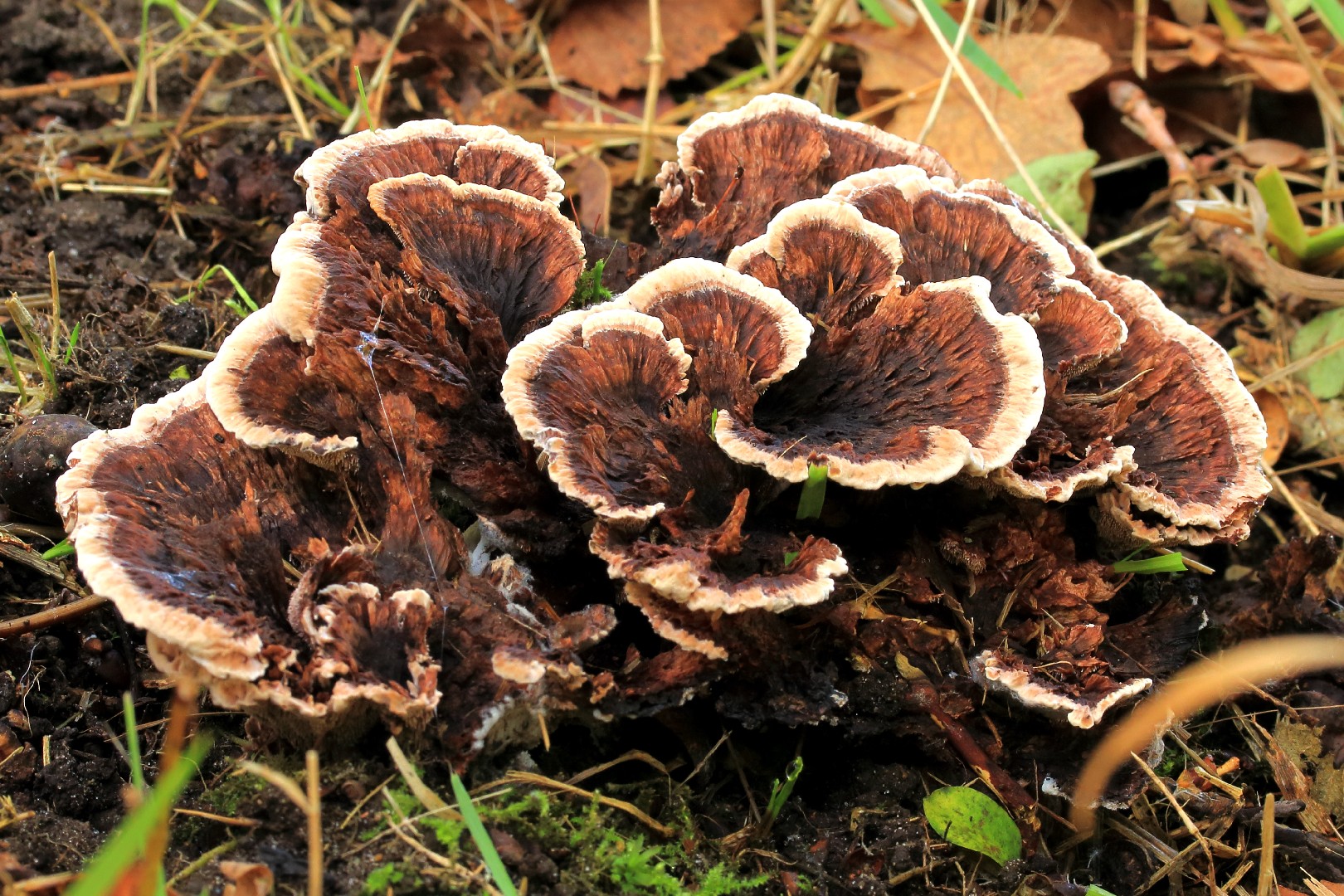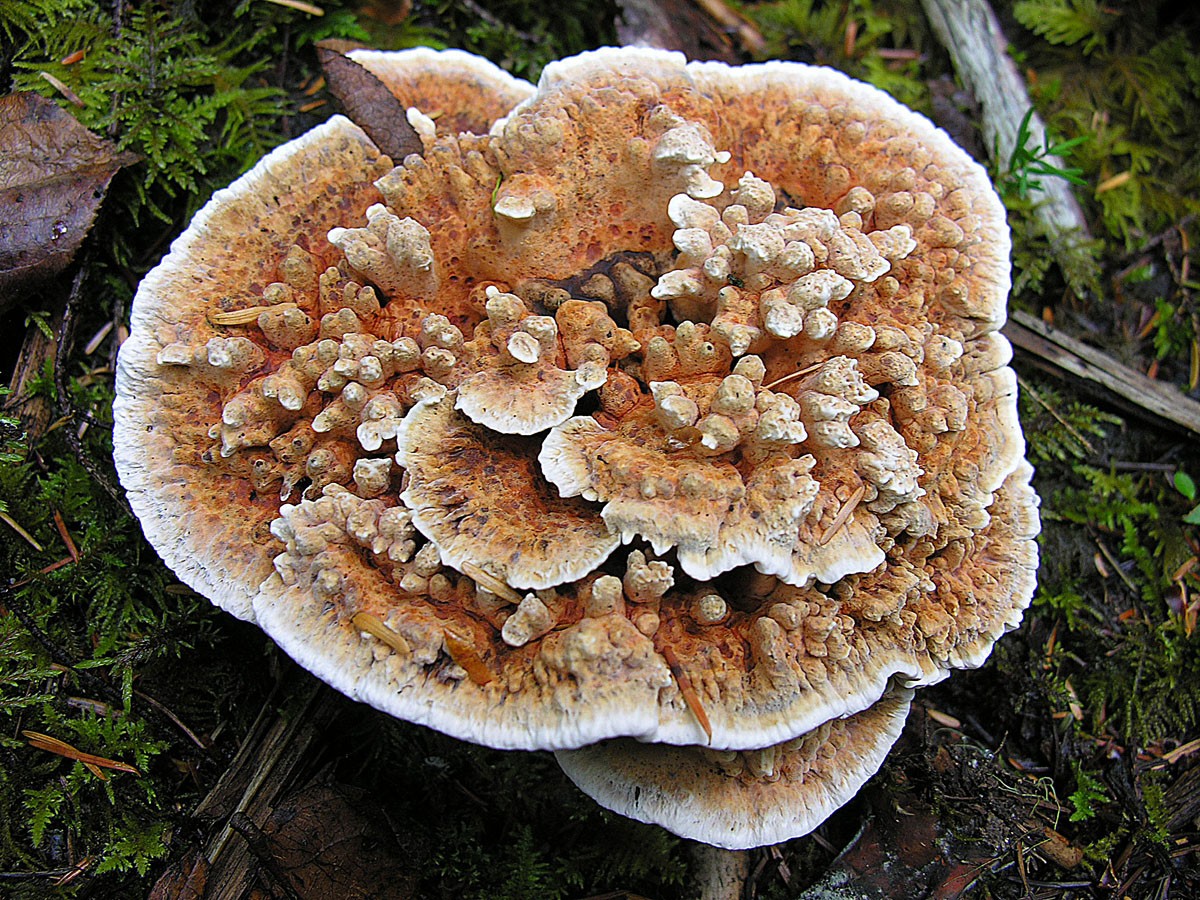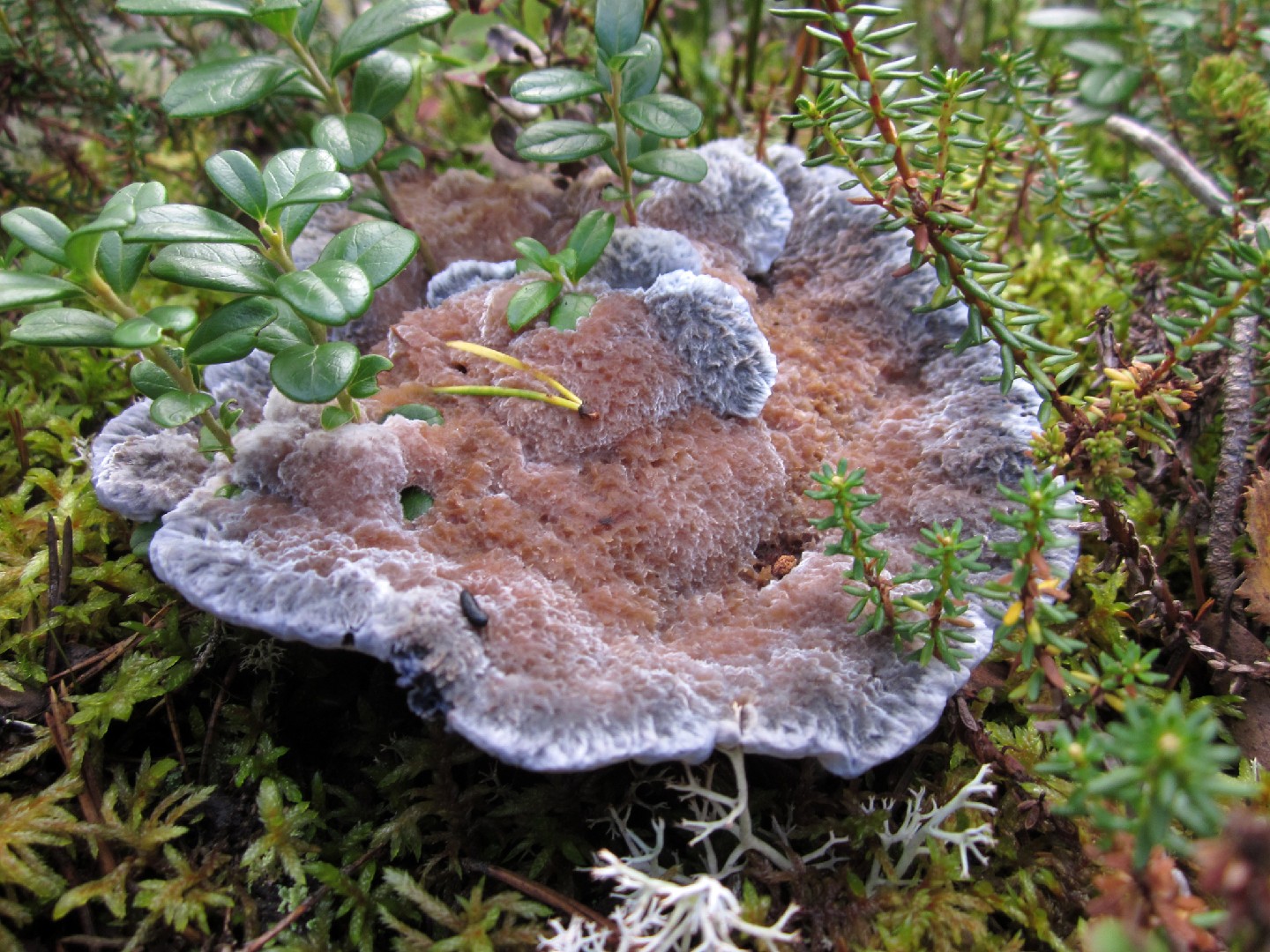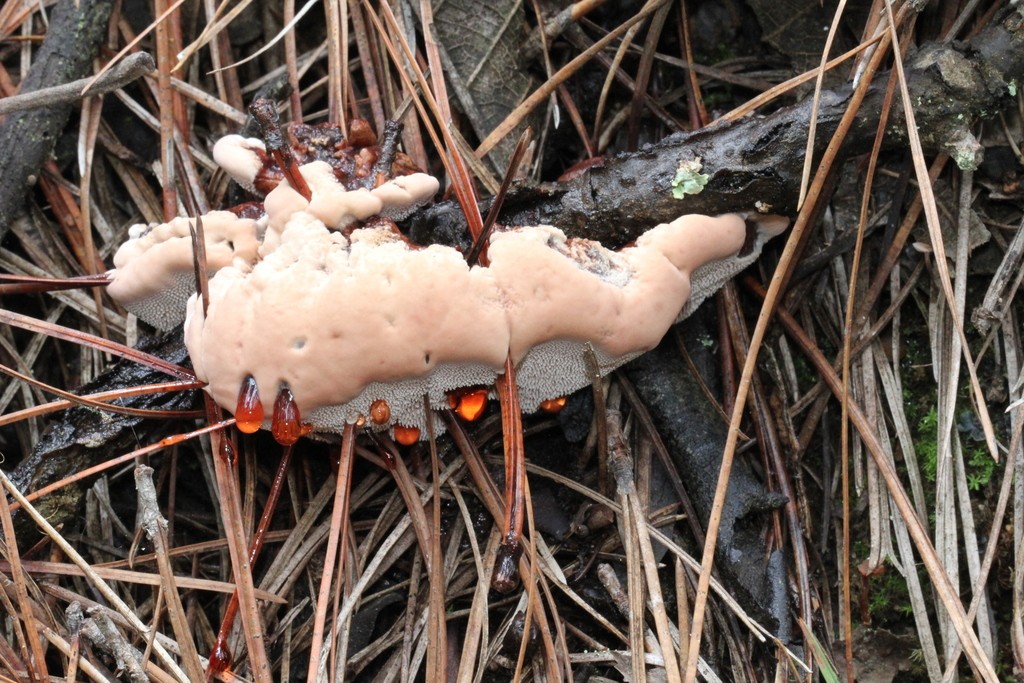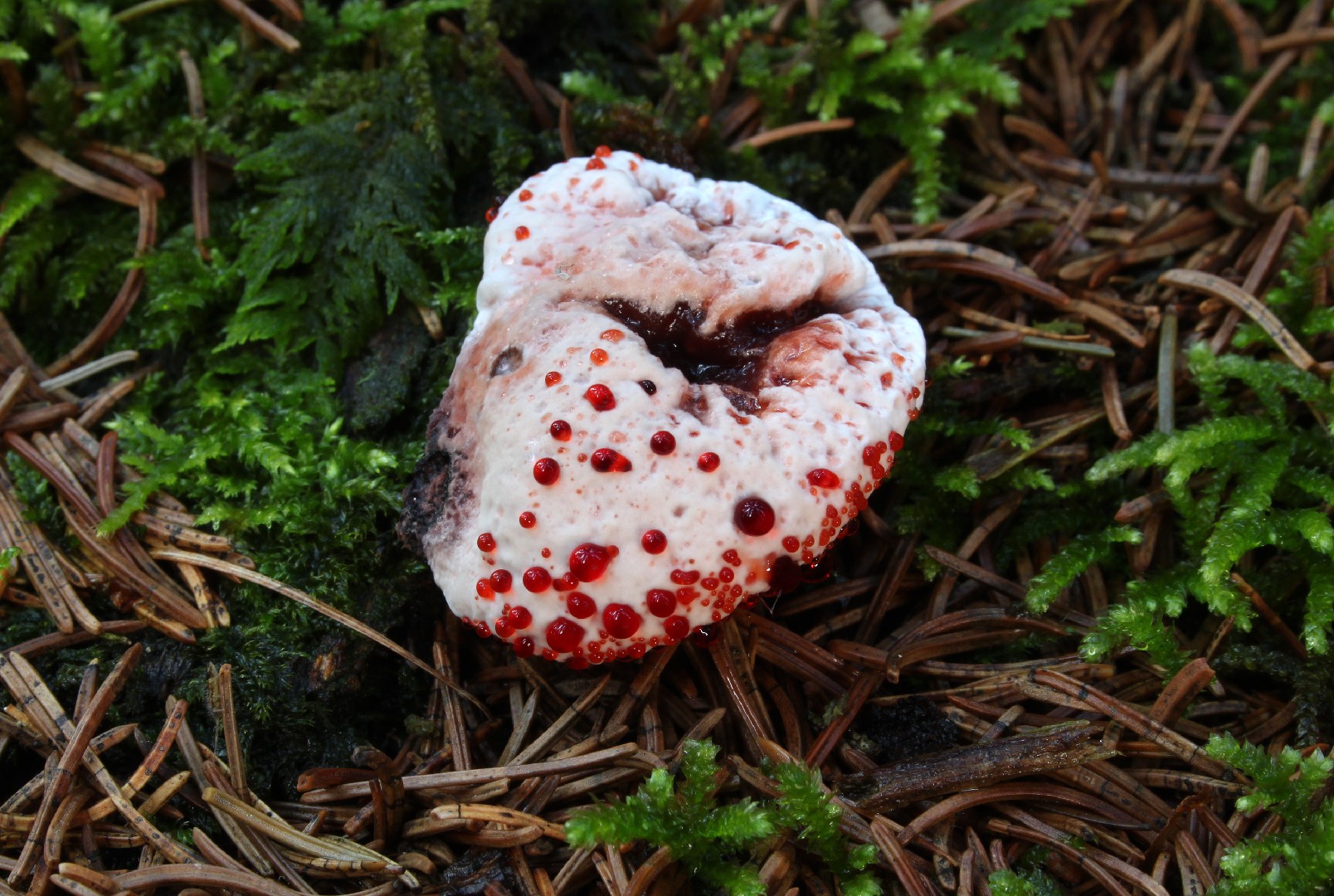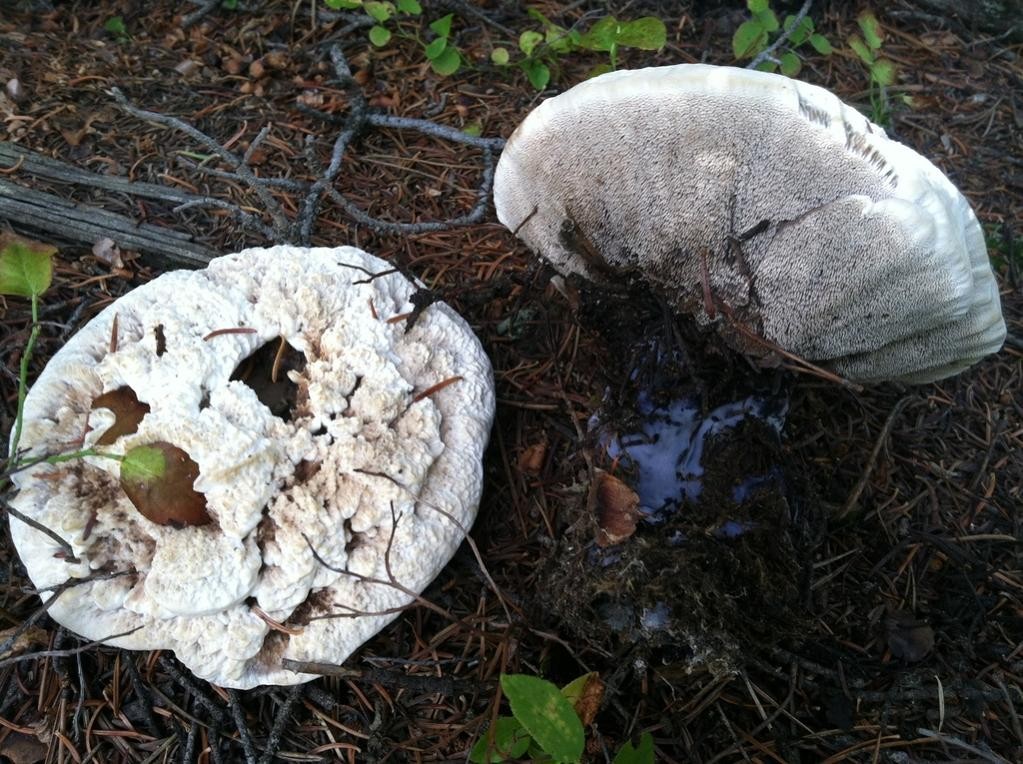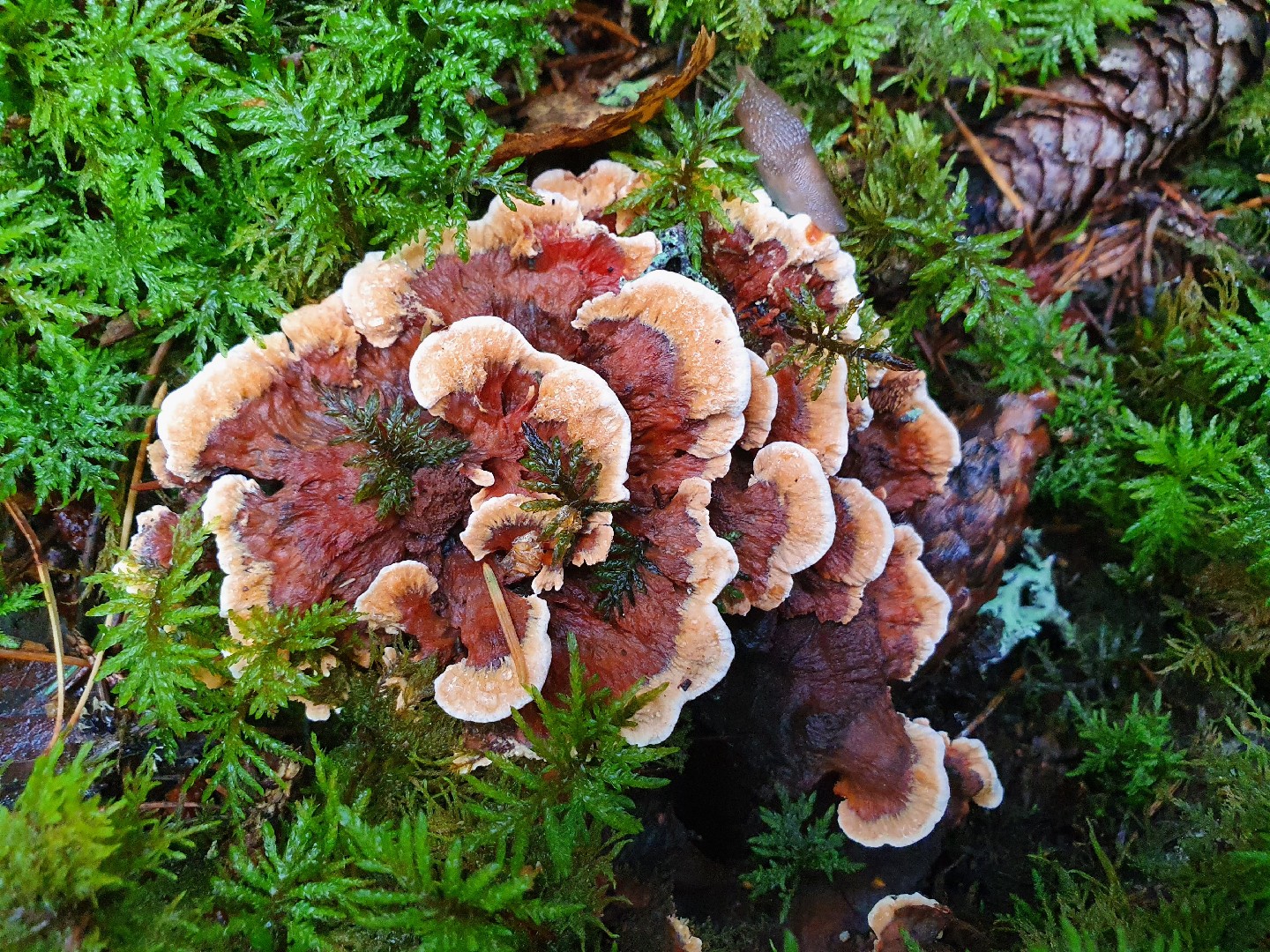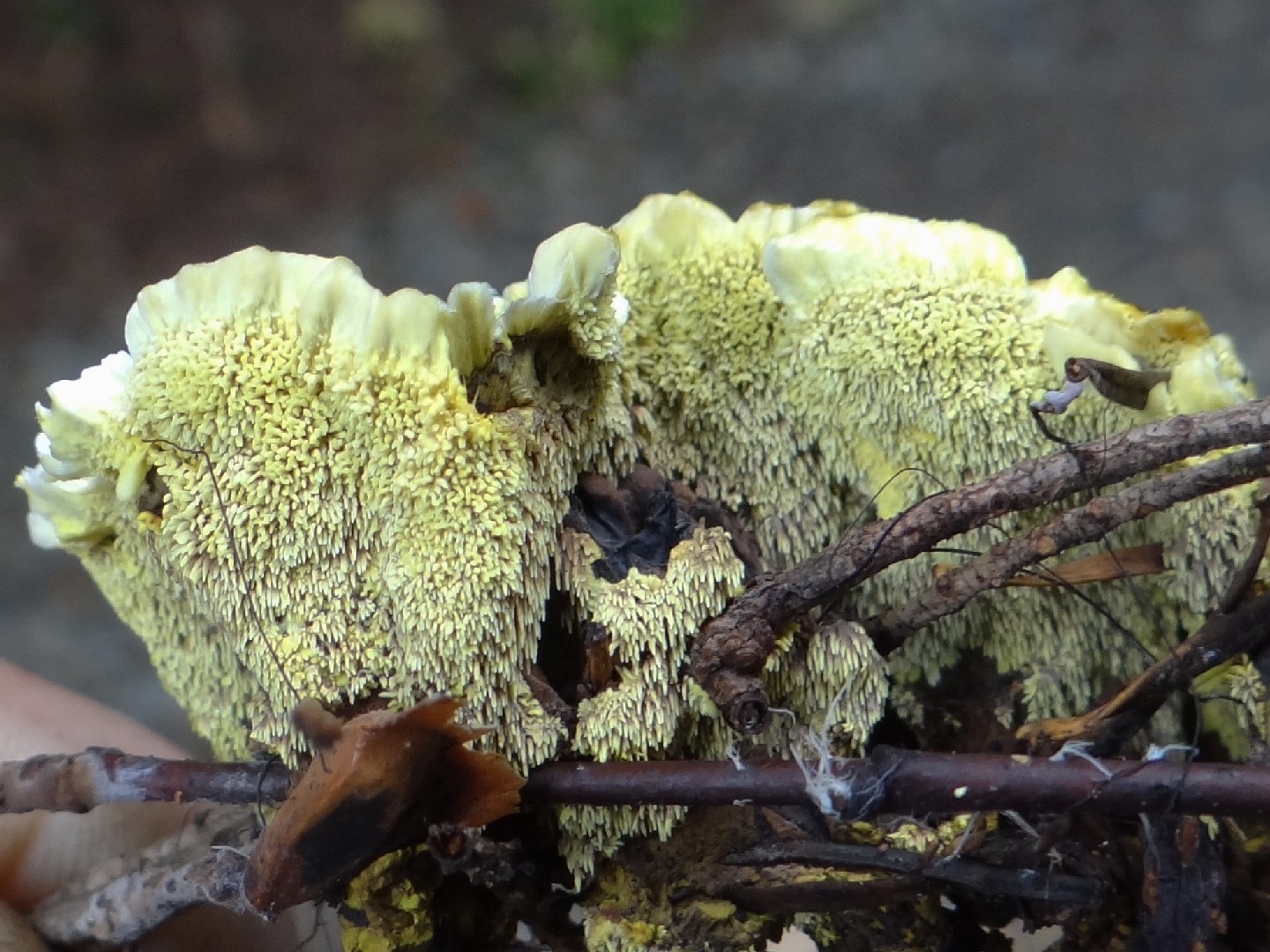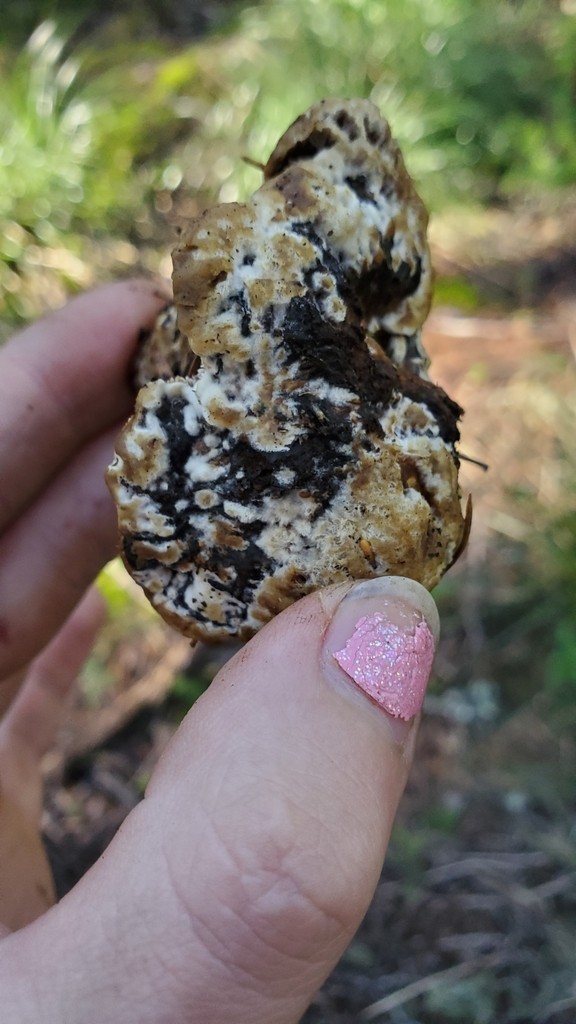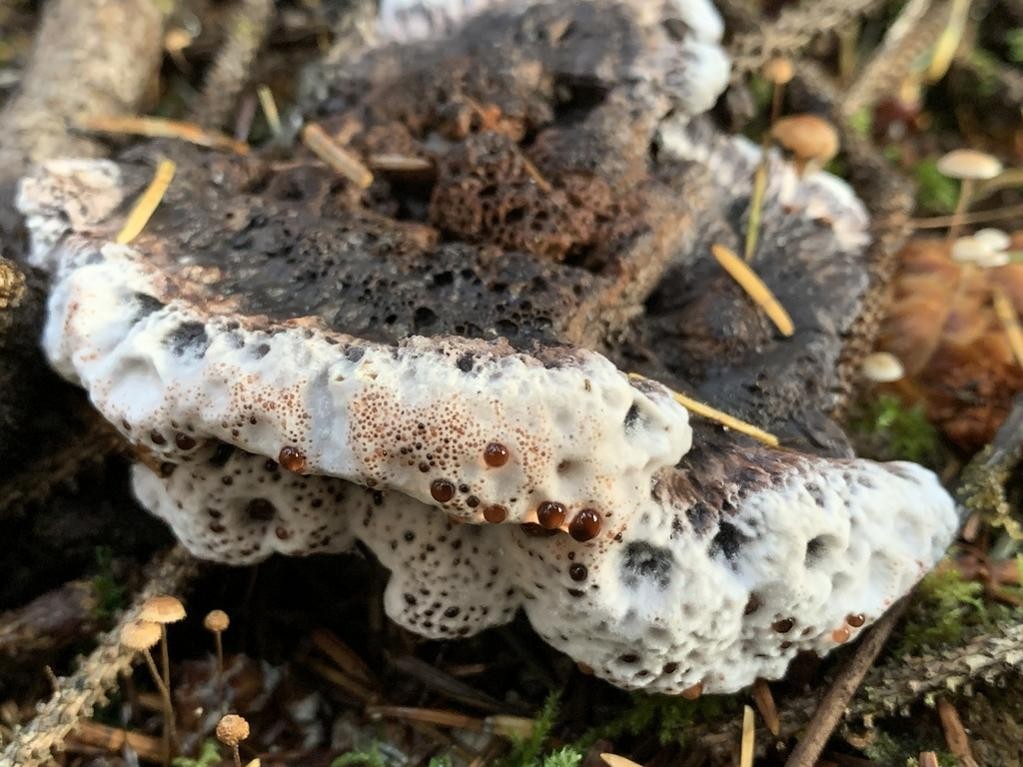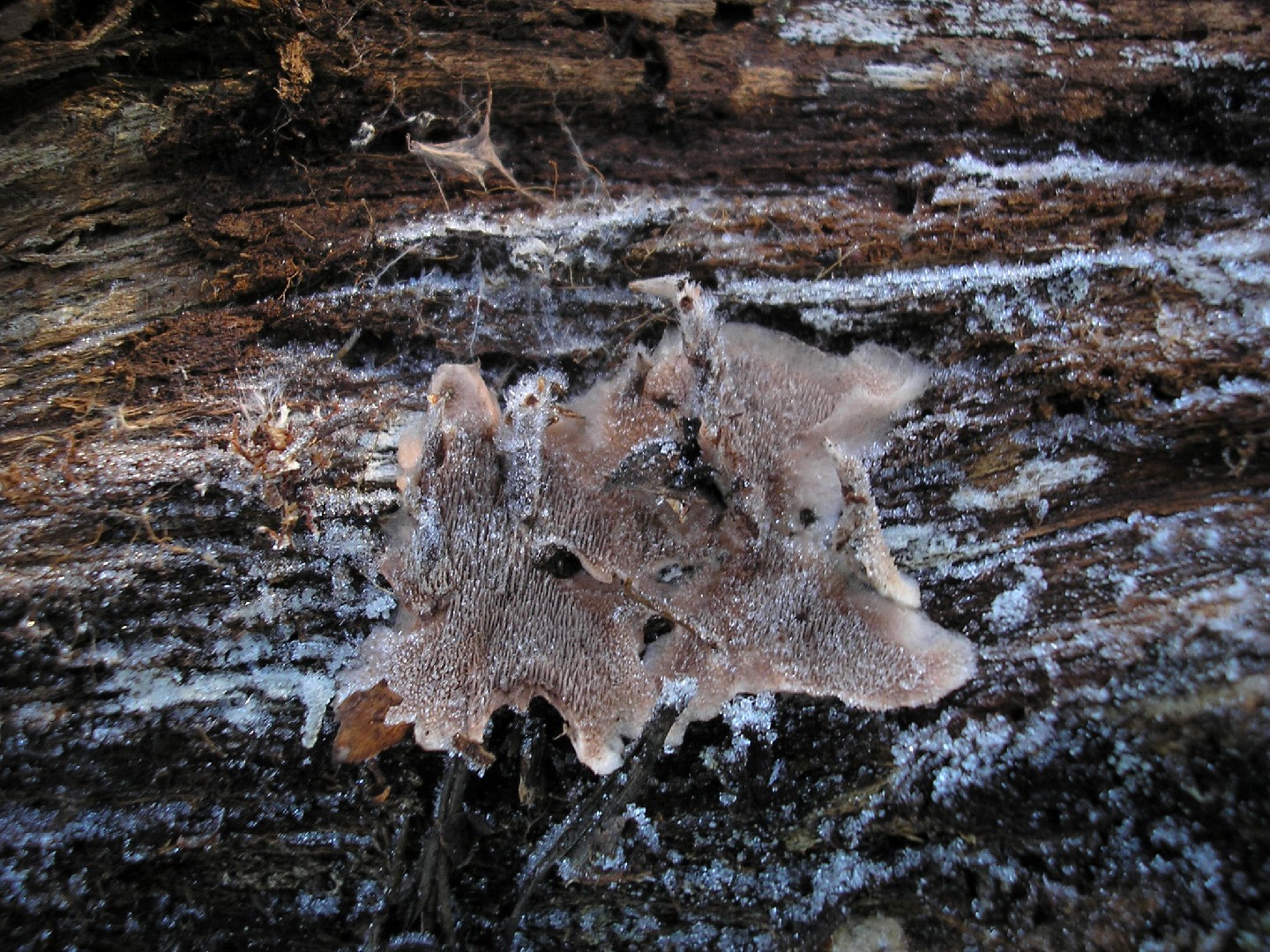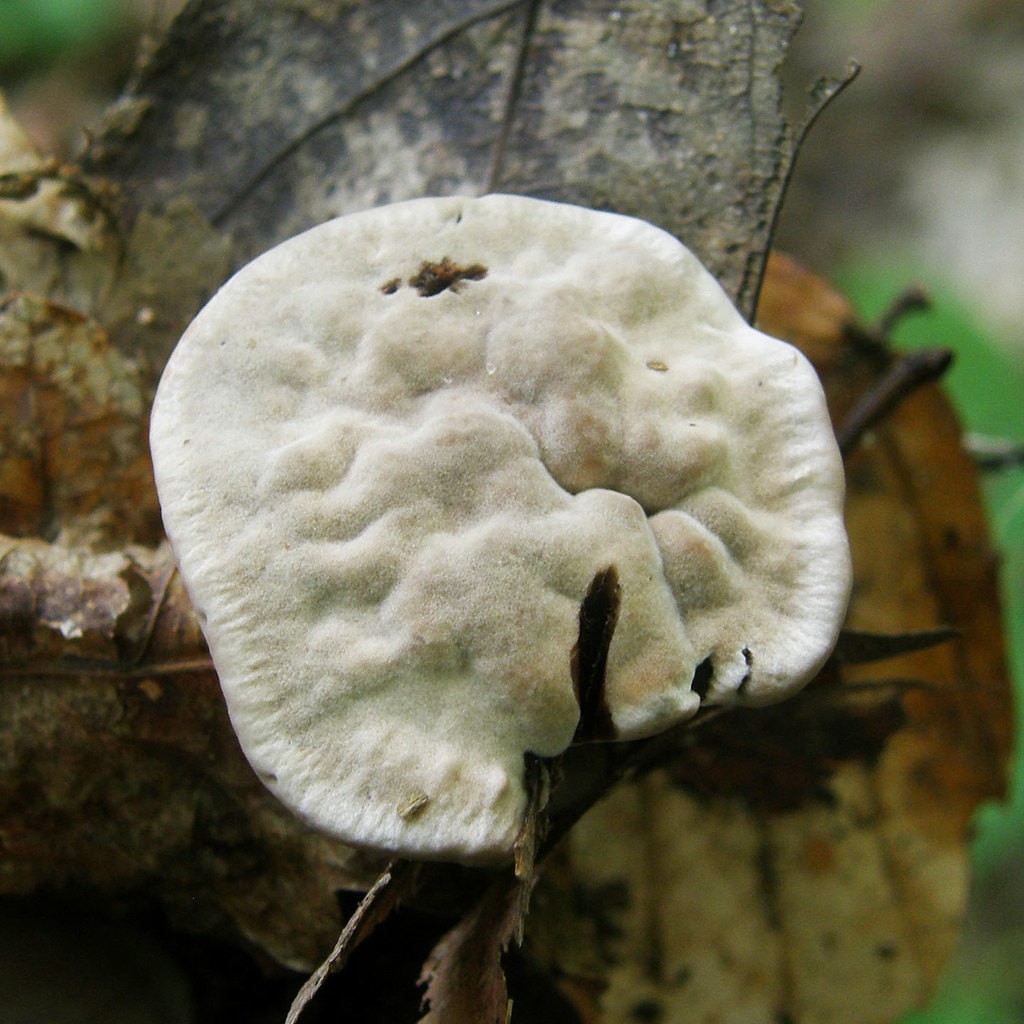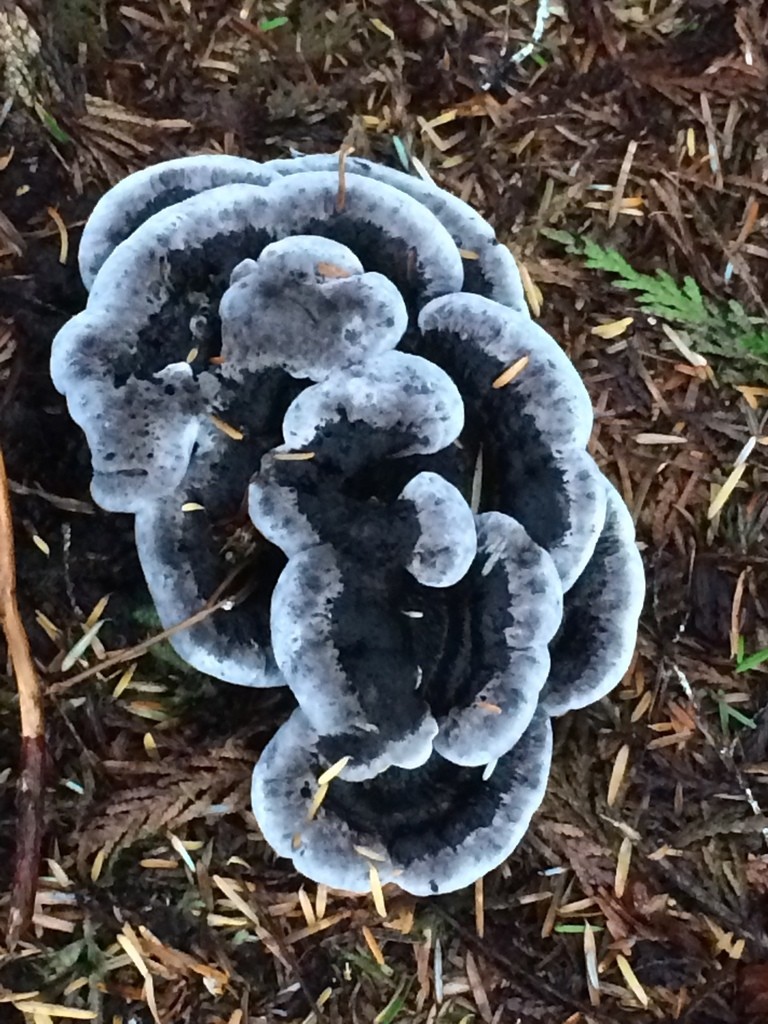Hydnellum
Scientific name: Hydnellum
Hydnellum
Scientific name: Hydnellum
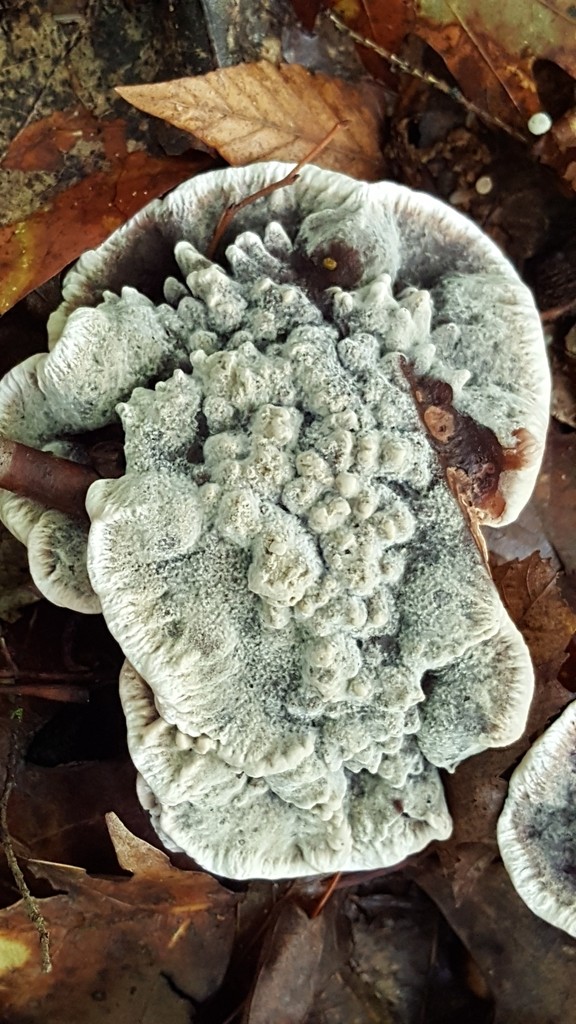 Photo By Charlie Hohn , used under CC-BY-4.0 /Cropped and compressed from original
Photo By Charlie Hohn , used under CC-BY-4.0 /Cropped and compressed from original Description
Hydnellum is known for its intriguing and often unusual tooth-like appearance on the underside of its cap, rather than traditional gills. Some species produce strikingly vibrant blue or red pigmentation, adding a splash of color to forest floors. They typically partner with trees, forming symbiotic relationships that benefit both organisms. The strong, earthy scent of hydnellum distinctively marks their presence in the wild, making them a fascinating group for nature enthusiasts to encounter.
Species of Hydnellum
Scientific Classification
Phylum
Club fungi Class
Mushroom-forming fungi Order
Thelephorales Family
Bankeraceae Genus
Hydnellum 